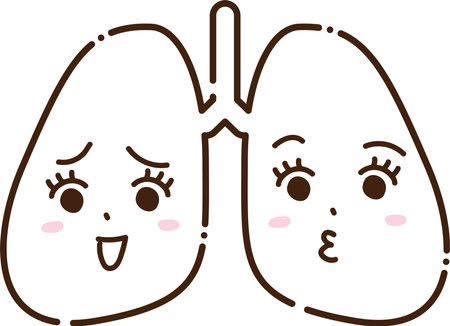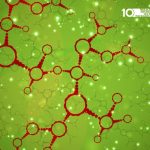1. Understanding the Aging Process of the Under-Eye Area
The under-eye area is one of the first places to show visible signs of aging. This delicate skin is thinner and more sensitive than other areas of the face, making it more susceptible to changes over time. Several biological and environmental factors contribute to these changes, leading to concerns like fine lines, wrinkles, puffiness, and dark circles.
Biological Factors That Affect Under-Eye Aging
Aging naturally impacts the skin in multiple ways. As we grow older, our bodys ability to produce essential proteins and retain moisture decreases, leading to noticeable changes in the under-eye area.
| Factor | Effect on the Under-Eye Area |
|---|---|
| Collagen Loss | Collagen provides structure and firmness to the skin. With age, collagen production slows down, causing the under-eye area to become thinner and more prone to wrinkles. |
| Reduced Elasticity | The skin’s elasticity diminishes due to decreased elastin production. This leads to sagging and the formation of fine lines around the eyes. |
| Fat Redistribution | The fat pads under the eyes can shift or diminish with age, resulting in hollowness or puffiness. |
| Slower Cell Renewal | The body’s natural ability to shed dead skin cells slows down, making the under-eye area appear dull and tired. |
Lifestyle and Environmental Contributors
Apart from natural aging, external factors also play a significant role in accelerating changes in the under-eye area. Daily habits and environmental exposure can lead to premature aging and worsen existing concerns.
Poor Sleep Habits
Lack of sleep can cause fluid retention and poor circulation, leading to puffiness and dark circles under the eyes.
Sun Exposure
UV rays break down collagen and elastin, speeding up wrinkle formation and making pigmentation issues more noticeable.
Diet and Hydration
An unbalanced diet high in salt or processed foods can lead to dehydration and water retention, making under-eye bags more prominent.
Lifestyle Choices
Smoking reduces oxygen flow to the skin, while excessive alcohol consumption dehydrates it. Both habits contribute to premature aging.
The Combined Impact on Your Under-Eye Area
The combination of biological aging and lifestyle factors creates a noticeable difference in how your under-eye area looks over time. While some changes are inevitable, understanding these contributing elements is the first step toward slowing down their effects and maintaining a youthful appearance.
2. Common Signs of Under-Eye Aging
The delicate skin under your eyes is one of the first areas to show signs of aging. Over time, natural changes in your skin structure, collagen levels, and hydration can lead to noticeable differences. Here are some common signs of under-eye aging and what causes them.
Fine Lines and Wrinkles
As collagen and elastin production slows down with age, the skin loses its firmness and elasticity. This results in fine lines and wrinkles, especially around the eyes where the skin is thinner. Repetitive facial expressions like smiling or squinting can also contribute to these lines becoming more prominent.
Dark Circles
Dark circles can develop due to thinning skin, loss of fat, or increased pigmentation. As the skin becomes thinner, blood vessels underneath become more visible, creating a darker appearance. Genetics, lack of sleep, and lifestyle factors like stress or poor diet can also make dark circles more pronounced.
Puffiness
Under-eye puffiness often results from fluid retention, weakened muscles, or fat shifting into the lower eyelid area. Factors like aging, allergies, high salt intake, and lack of sleep can make puffiness worse. Over time, this swelling can become persistent rather than just a temporary concern.
Hollowness
Loss of fat and collagen in the under-eye area can lead to a sunken or hollow look. This often makes shadows appear more noticeable, contributing to a tired or aged appearance. Hollowness is typically caused by natural aging but can also be influenced by genetics.
Summary of Common Under-Eye Aging Signs
| Aging Sign | Description | Main Causes |
|---|---|---|
| Fine Lines & Wrinkles | Small creases that form due to loss of elasticity | Aging, repetitive expressions, sun exposure |
| Dark Circles | Darkened skin under the eyes caused by thinning skin or pigmentation | Aging, genetics, poor sleep, lifestyle factors |
| Puffiness | Swelling under the eyes due to fluid retention or fat displacement | Aging, allergies, high salt intake, poor sleep |
| Hollowness | A sunken appearance caused by volume loss | Aging, collagen loss, genetics |
If youve noticed any of these changes in your under-eye area, dont worry—there are ways to help manage and improve them. In the next section, well explore effective treatments and skincare solutions that can make a difference.
![]()
3. Preventative Measures to Slow Down Aging
Taking proactive steps can help slow down the aging process and keep your under-eye area looking youthful for longer. By incorporating the right skincare habits, protecting your skin from environmental damage, and maintaining a healthy lifestyle, you can minimize fine lines, puffiness, and dark circles.
Skincare Routine for Under-Eye Health
A consistent and targeted skincare routine is key to preventing premature aging around the eyes. Choose products that are specifically formulated for the delicate under-eye area.
| Step | Recommended Products | Benefits |
|---|---|---|
| Gentle Cleansing | Fragrance-free micellar water or mild cleanser | Removes dirt and makeup without stripping moisture |
| Hydration | Hyaluronic acid-based eye creams | Keeps skin plump and reduces dryness |
| Anti-Aging Treatment | Retinol or peptide-infused eye serums | Boosts collagen production and smooths fine lines |
| Sun Protection | Broad-spectrum SPF 30+ sunscreen | Prevents UV damage and slows down aging signs |
The Importance of Sun Protection
UV exposure is one of the leading causes of premature aging. The delicate skin under your eyes is particularly vulnerable to sun damage, which can lead to wrinkles, dark spots, and loss of elasticity.
How to Protect Your Under-Eyes from Sun Damage:
- Apply a broad-spectrum SPF 30+ sunscreen daily, even on cloudy days.
- Wear sunglasses with UV protection to shield your eyes from direct sunlight.
- Avoid excessive sun exposure during peak hours (10 AM – 4 PM).
- Use hats or visors for extra protection when outdoors.
The Role of Hydration in Skin Health
Dehydration can make fine lines more noticeable and contribute to puffiness. Keeping both your skin and body hydrated is essential for maintaining a youthful appearance.
Tips for Staying Hydrated:
- Drink at least 8 glasses of water daily to maintain skin elasticity.
- Use a humidifier in dry environments to prevent moisture loss.
- Incorporate hydrating ingredients like aloe vera and glycerin into your skincare routine.
- Avoid excessive caffeine and alcohol, which can dehydrate your skin.
Lifestyle Habits That Support Youthful Skin
Your daily habits play a significant role in how your skin ages. Making small but impactful changes can help preserve the health of your under-eye area.
Healthy Lifestyle Practices:
- Get Enough Sleep: Aim for 7-9 hours of quality sleep each night to reduce puffiness and dark circles.
- Eat an Antioxidant-Rich Diet: Include fruits, vegetables, and omega-3 fatty acids to nourish your skin from within.
- Avoid Smoking: Smoking accelerates collagen breakdown and contributes to premature wrinkles.
- Manage Stress: High stress levels can lead to inflammation and worsen signs of aging. Try meditation or relaxation techniques.
- Exercise Regularly: Physical activity improves blood circulation, helping to keep your skin glowing and firm.
Taking these preventative measures early on can make a significant difference in how your under-eye area ages over time. By prioritizing skincare, sun protection, hydration, and healthy lifestyle choices, you can maintain a youthful and refreshed appearance for years to come.
4. Non-Invasive Treatments for Under-Eye Concerns
Aging can lead to dark circles, fine lines, puffiness, and hollowness under the eyes. Fortunately, there are several non-invasive treatments that can help refresh and rejuvenate this delicate area without the need for surgery.
Eye Creams and Serums
Topical treatments like eye creams and serums can provide hydration, reduce puffiness, and improve skin elasticity. Look for ingredients such as:
- Hyaluronic Acid: Helps retain moisture and plump the skin.
- Retinol: Encourages collagen production to reduce fine lines.
- Caffeine: Reduces puffiness by constricting blood vessels.
- Vitamin C: Brightens dark circles and improves skin tone.
Dermal Fillers
If volume loss is a concern, dermal fillers like hyaluronic acid-based injectables can restore fullness under the eyes. These fillers help smooth out hollow areas and minimize shadows, creating a more youthful appearance.
Laser Treatments
Laser therapy can address pigmentation issues, boost collagen production, and tighten the skin. Some popular laser options include:
| Treatment | Benefits |
|---|---|
| Fraxel Laser | Improves skin texture and reduces fine lines. |
| Pico Laser | Targets pigmentation and evens out skin tone. |
| C02 Laser | Tightens loose skin and stimulates collagen growth. |
Microneedling
This procedure involves tiny needles that create micro-injuries in the skin to stimulate collagen production. It helps with fine lines, mild sagging, and overall skin rejuvenation.
Which Treatment Is Right for You?
The best treatment depends on your specific concerns. If youre dealing with dryness or early signs of aging, an eye cream or serum may be enough. For deeper wrinkles or volume loss, dermal fillers could be a great option. Consulting with a skincare professional can help you determine the most effective approach based on your needs.
5. Surgical Solutions for Long-Lasting Results
If youre looking for a more permanent solution to under-eye aging, surgical procedures like lower blepharoplasty and fat transfer can provide long-lasting results. These treatments address common concerns such as sagging skin, deep tear troughs, and under-eye hollows, helping you achieve a refreshed and youthful appearance.
Lower Blepharoplasty: Removing Excess Skin and Fat
Lower blepharoplasty, also known as eyelid surgery, is a popular procedure designed to remove or reposition excess skin and fat beneath the eyes. This surgery is ideal for individuals dealing with:
- Puffy under-eye bags caused by fat deposits
- Loose, sagging skin that creates wrinkles
- A tired or aged appearance due to drooping lower eyelids
The procedure is typically performed under local anesthesia with sedation or general anesthesia. During the surgery, the surgeon makes a small incision either inside the lower eyelid (transconjunctival approach) or just below the lash line (subciliary approach) to remove or redistribute fat and tighten the skin.
Fat Transfer: Restoring Volume Naturally
Fat transfer, also called fat grafting, is another surgical option that helps restore lost volume under the eyes. This procedure involves harvesting fat from another area of your body—such as the abdomen or thighs—purifying it, and injecting it into the under-eye region.
This technique offers several benefits:
- A natural-looking improvement in under-eye hollows
- A longer-lasting result compared to dermal fillers
- The use of your own fat minimizes the risk of allergic reactions
Surgical vs. Non-Surgical Treatments: What’s Right for You?
If youre unsure whether surgery is the right choice for you, consider the differences between surgical and non-surgical options:
| Treatment Type | Procedure | Results Duration | Best For |
|---|---|---|---|
| Surgical (Lower Blepharoplasty) | Removes excess skin and fat | Long-lasting (years to lifetime) | Puffy eye bags, sagging skin |
| Surgical (Fat Transfer) | Adds volume using own fat cells | Long-lasting (years) | Under-eye hollows, volume loss |
| Non-Surgical (Fillers) | Adds temporary volume using hyaluronic acid | 6-18 months | Mild to moderate under-eye hollows |
| Non-Surgical (Laser & RF Treatments) | Tightens skin and boosts collagen production | Several months to years with maintenance | Mild wrinkles, early signs of aging |
Recovery and Aftercare
The recovery period varies depending on the procedure. Lower blepharoplasty generally requires about 1-2 weeks of downtime, while swelling from a fat transfer may take a few weeks to subside completely. Following post-operative care instructions is essential to ensure smooth healing and optimal results.
If youre considering a surgical approach to rejuvenate your under-eye area, consult with a board-certified plastic surgeon or oculoplastic specialist. They can assess your unique concerns and recommend the best treatment plan tailored to your needs.


